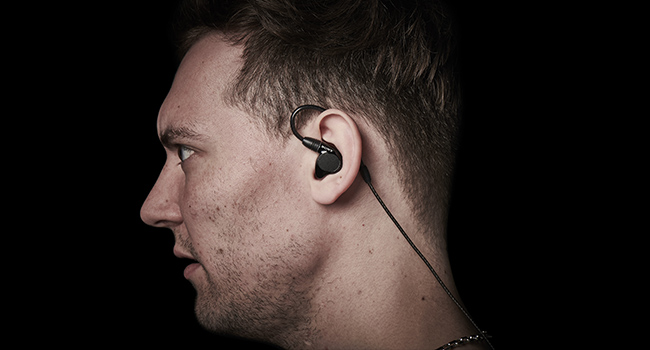TECKNET GH928 USB Gaming Headset – Immersive Gaming Experience
Update on June 30, 2025, 7:33 a.m.
Long before the glow of pixels and the click of keys, survival was a game of sound. For our earliest ancestors, the rustle of leaves in the tall grass was not ambient noise; it was data. It was the subtle signature of prey, critically different from the sharp snap of a twig under a predator’s paw. Our brains evolved to become unparalleled surround-sound processors, building a 3D map of the world from auditory cues alone. This ancient, deeply ingrained skill—the ability to hear where you cannot see—is the very foundation that modern gaming headsets seek to master, manipulate, and magnify.
Today, the digital savannahs of our favorite games present a new kind of survival test. And in this realm, devices like the TECKNET GH928 USB Gaming Headset become our augmented ears. But how, exactly, does a piece of hardware resting on your head convince your brain that a threat is creeping up from behind? It’s not magic; it’s a masterful blend of physics and psychology, a form of architecture that builds its structures not with stone, but with sound.

The Foundation: Crafting Sound from Silence
Every grand structure begins with quality materials, and in the world of audio, the fundamental building blocks are the drivers. The GH928 employs large 50mm neodymium drivers, and those specifications are far more than just marketing jargon. Think of the drivers as the headset’s vocal cords. The 50mm diameter gives them a larger surface area to move air, which in the physics of sound, translates directly into the ability to produce deeper, more resonant low-frequency sounds (bass) and a more expansive, open soundstage.
The “neodymium” element is the muscle behind the voice. These powerful rare-earth magnets create an intense magnetic field, making the drivers incredibly efficient and sensitive—rated here at 108dB +/- 3dB. This high sensitivity means they can react with lightning speed and precision to the electrical signals they receive, faithfully reproducing the entire audible spectrum, from the subterranean rumble of an earthquake at 20Hz to the piercing shriek of sci-fi weaponry at 20KHz. These are the raw, high-quality bricks with which our auditory world will be built.

The Grand Deception: Engineering a 3D Auditory Space
Here is where the true artistry begins. The headset promises 7.1 channel surround sound, yet it only has two speakers—one for each ear. This is the heart of the illusion, an auditory version of the art technique known as trompe-l’œil, which tricks the eye into perceiving a flat painting as a three-dimensional reality. This headset performs a trompe-l’oreille—it tricks the ear.

The secret lies in the USB connection and its accompanying software. Unlike a traditional analog jack, a USB cable transmits pure digital data. This allows a dedicated software driver to act as a “sound architect” or a digital illusionist. As some users have discovered, this software might even appear under a different name like “Kotion Each”—a common ghost in the machine of electronics manufacturing—but its function is the same. It intercepts the game’s sound data and intelligently manipulates it before it ever becomes a physical sound wave, using principles of psychoacoustics.
The software slightly alters the sound for each ear, creating minute, calculated differences in: * Timing: A sound originating from your right will be sent to your right ear a fraction of a second before it reaches your left. * Volume: It will be marginally louder in your right ear. * Frequency: Most brilliantly, it applies subtle filters to the sound, mimicking the way your own head and the unique shape of your ears naturally color and dampen sounds coming from different directions.
Your brain, running on its ancient survival software, automatically processes these tiny cues. It doesn’t “hear” the trick; it simply perceives the result—a seamless, 360° soundscape. That footstep isn’t just “on the left”; it’s behind a specific crate, ten paces away, on a gravel surface. The architecture is complete. You can now see with your ears.

The Human Element: Making the Illusion Livable
A stunning cathedral is worthless if it’s uninhabitable. The most brilliant illusion fails if the user is pulled out of the experience by discomfort or poor communication. This is where engineering bows to ergonomics and practicality.
First, communication within this new reality is key. The noise-cancelling microphone acts as the building’s flawless intercom system. It’s designed to be directional, focusing intently on the sound directly in front of it (your voice) while rejecting the ambient chaos of keyboard clatter and room echo. Some users note its rigid, non-bendable design. This is a classic engineering trade-off: what it may lose in perfect positioning, it gains in durability, preventing a common point of failure in more flexible boom mics.

Second, endurance. A marathon gaming session is a test of focus, and physical discomfort is focus’s mortal enemy. The headset’s over-ear design, crafted from robust Acrylonitrile Butadiene Styrene (ABS) plastic, is designed to manage its 497-gram weight by distributing pressure around the ears, not on them. The soft, breathable cloth cushions combat heat and sweat, allowing you to remain immersed for hours. Even the optional vibration feature is a curious attempt to add another sensory layer to the illusion—a tactile rumble to accompany an explosion’s roar, though whether this enhances immersion or distracts from pure audio cues remains a topic of player debate.

In the Cathedral of Sound
Ultimately, a headset like the TECKNET GH928 is far more than a peripheral. It’s a testament to our ongoing quest to merge with our digital worlds. It’s a pocket-sized marvel of applied science, weaving physics, digital processing, and a deep understanding of human perception into a single, accessible package. By using modern technology to hijack and amplify our most primal auditory instincts, it builds a cathedral of sound inside the mind. And as we sit within these intricate, invisible architectures, hearing a digital world with a clarity our ancestors could only dream of, it begs a fascinating question: when an illusion becomes this convincing, how do we define the experience itself?



























































